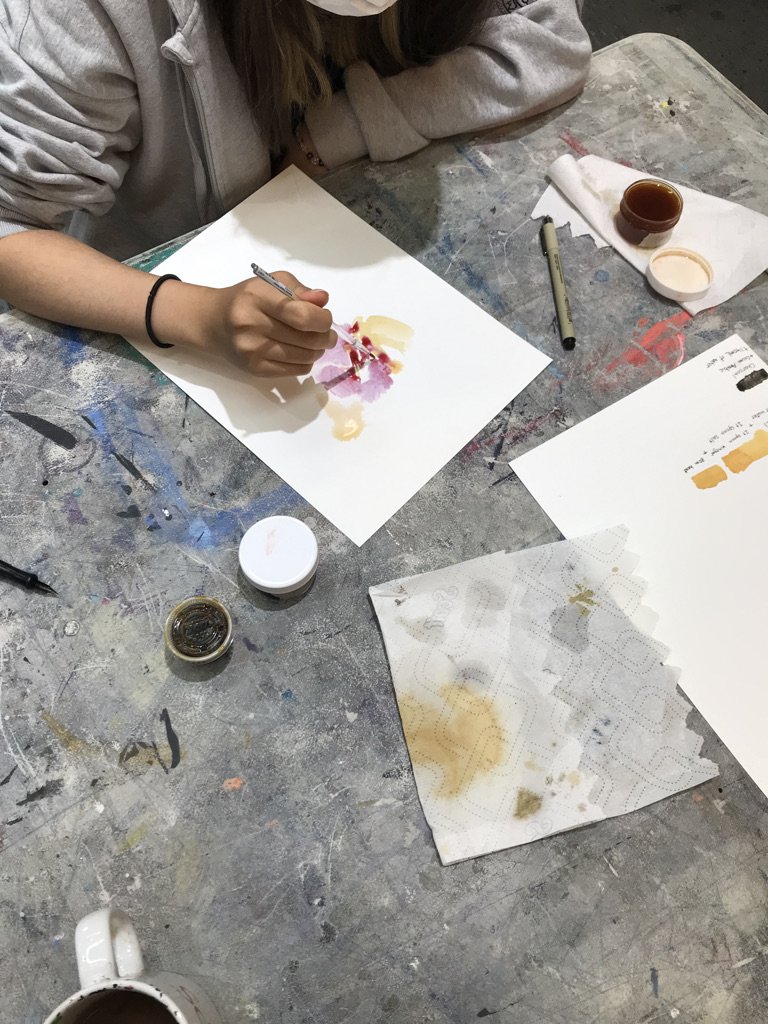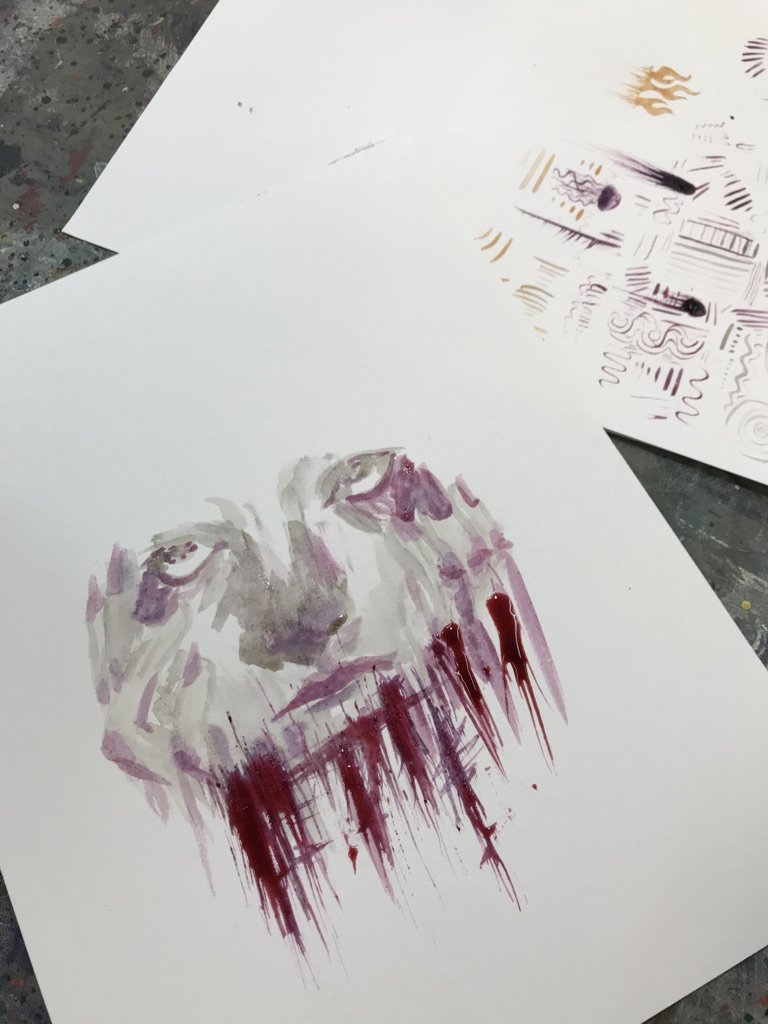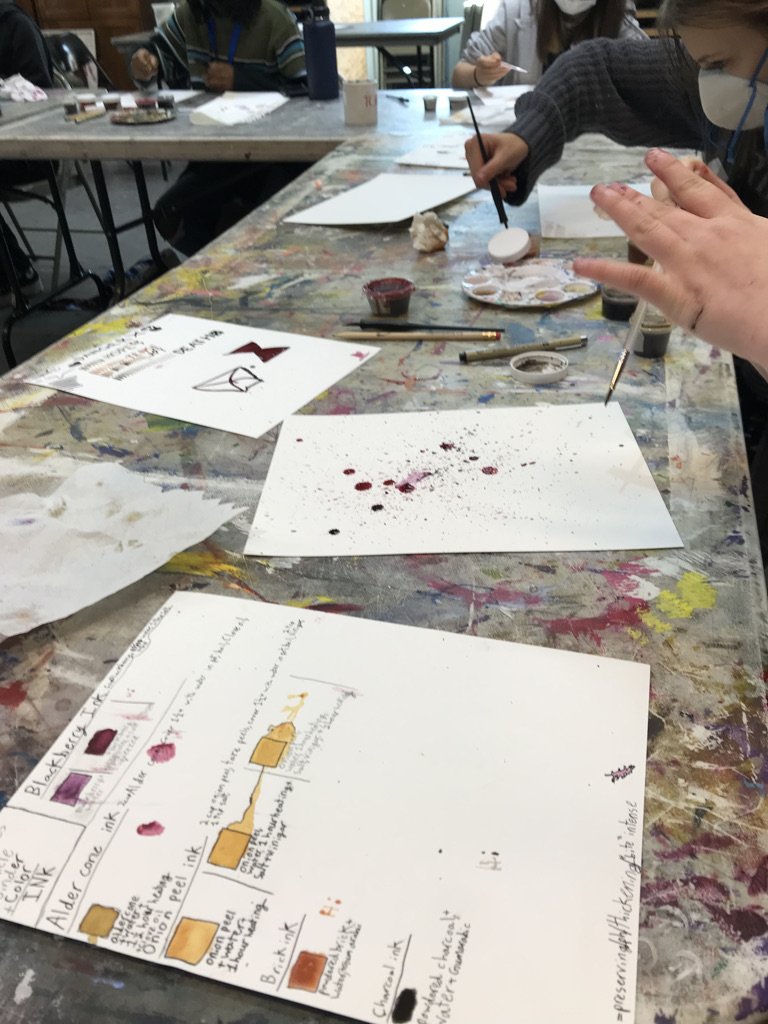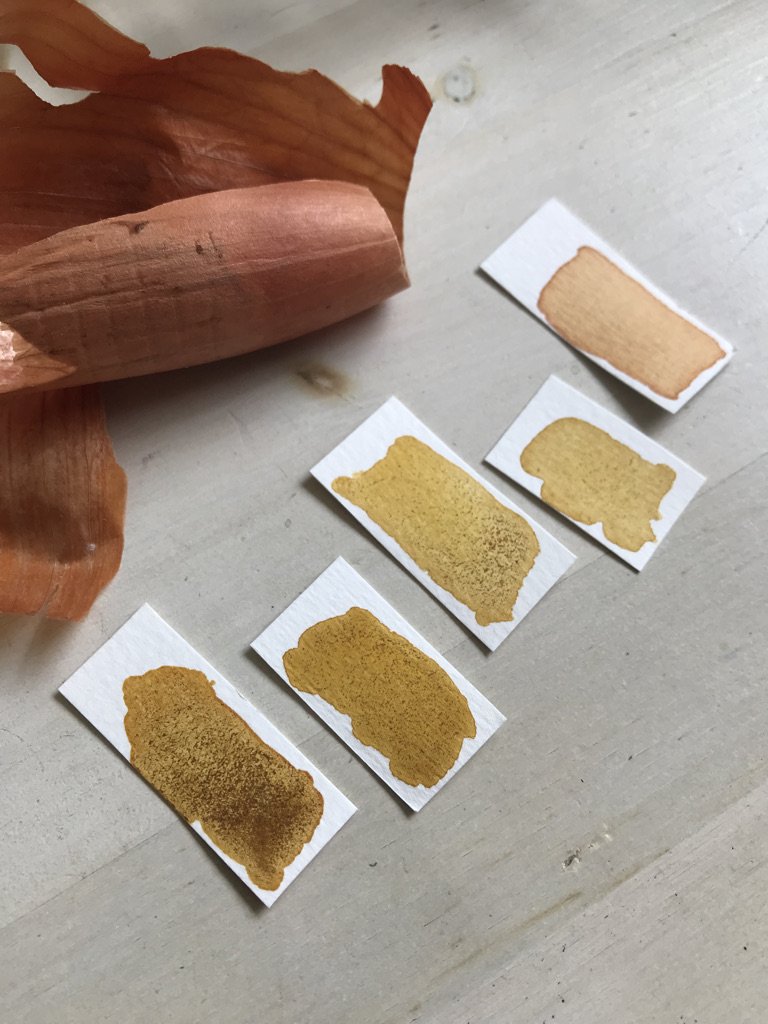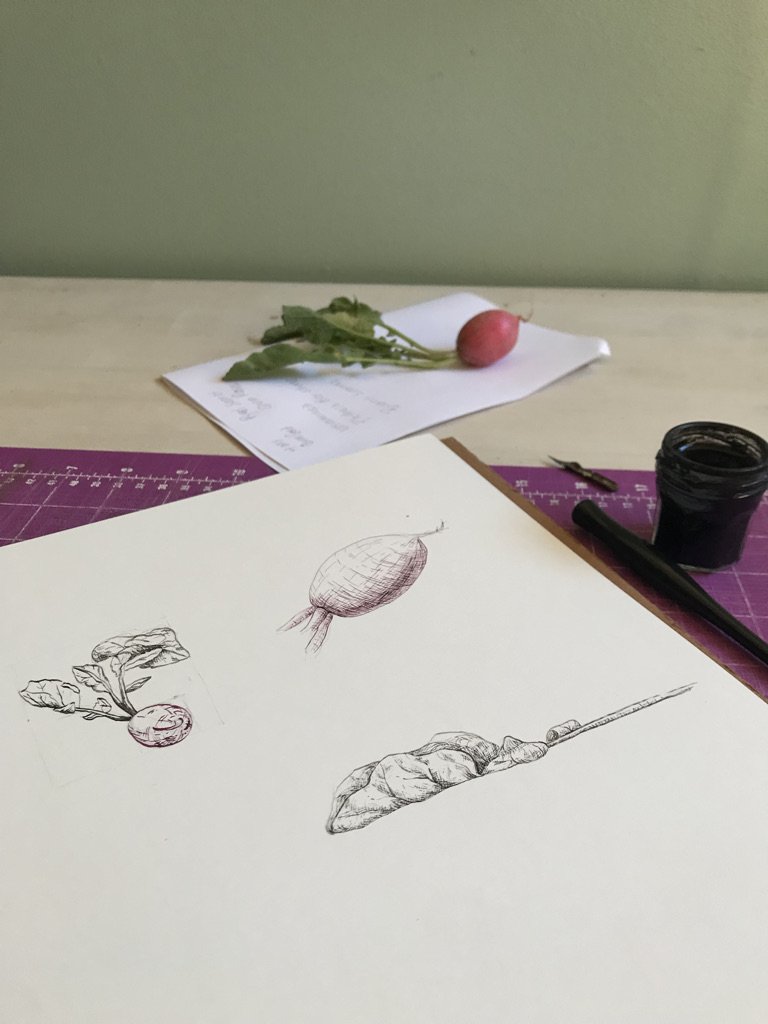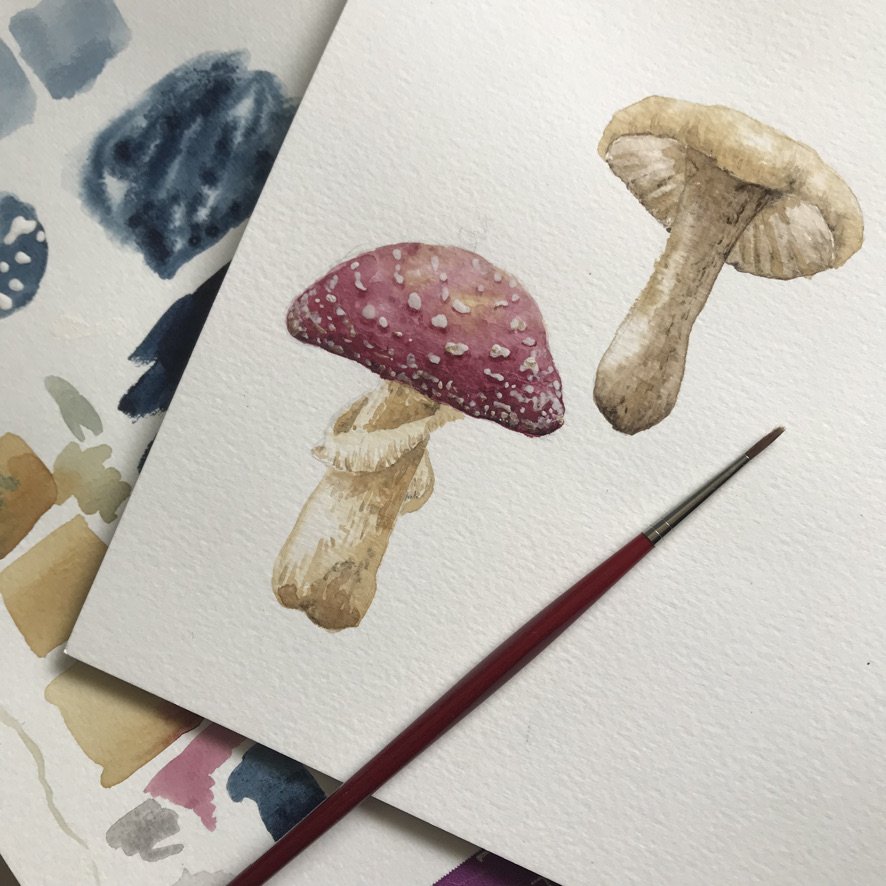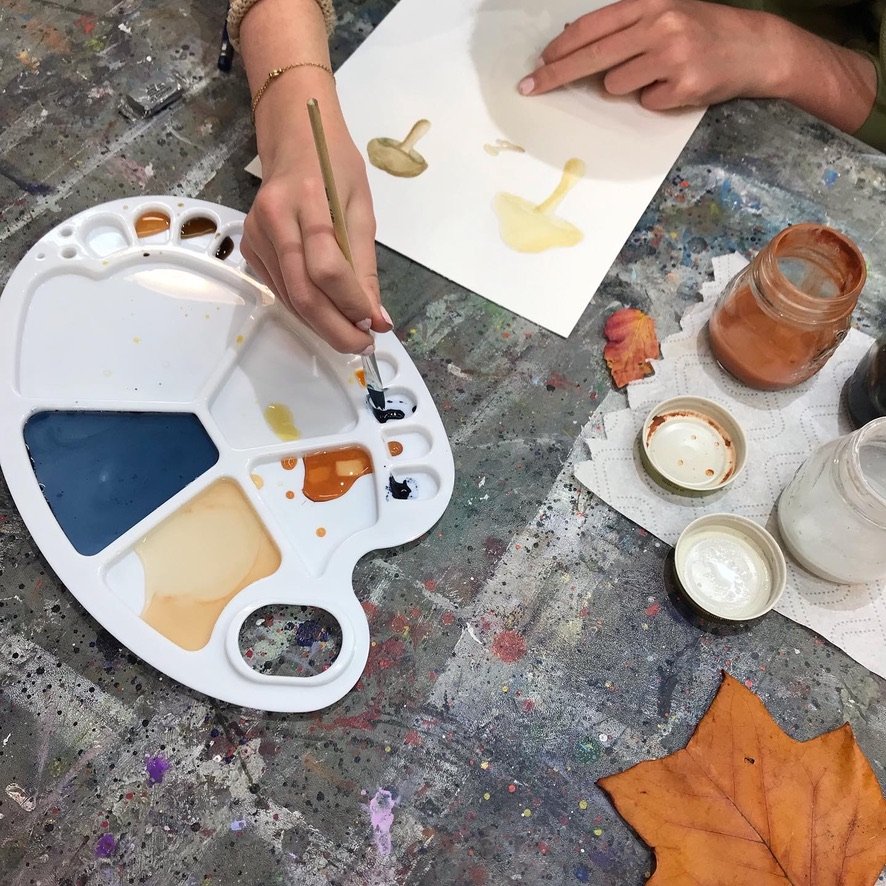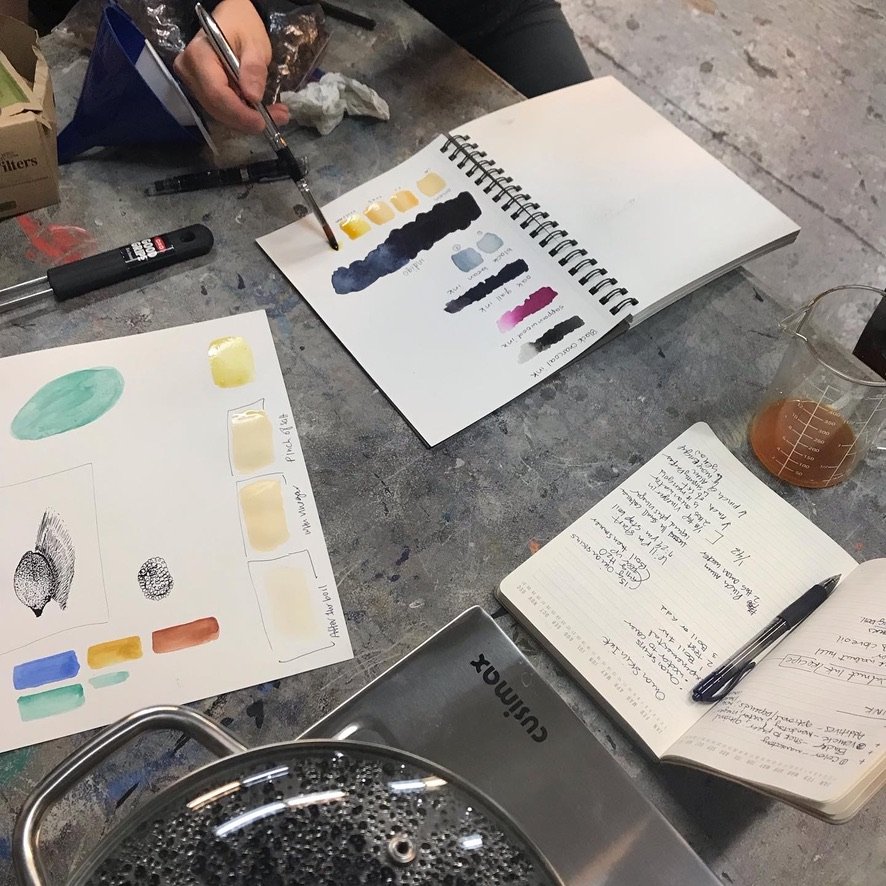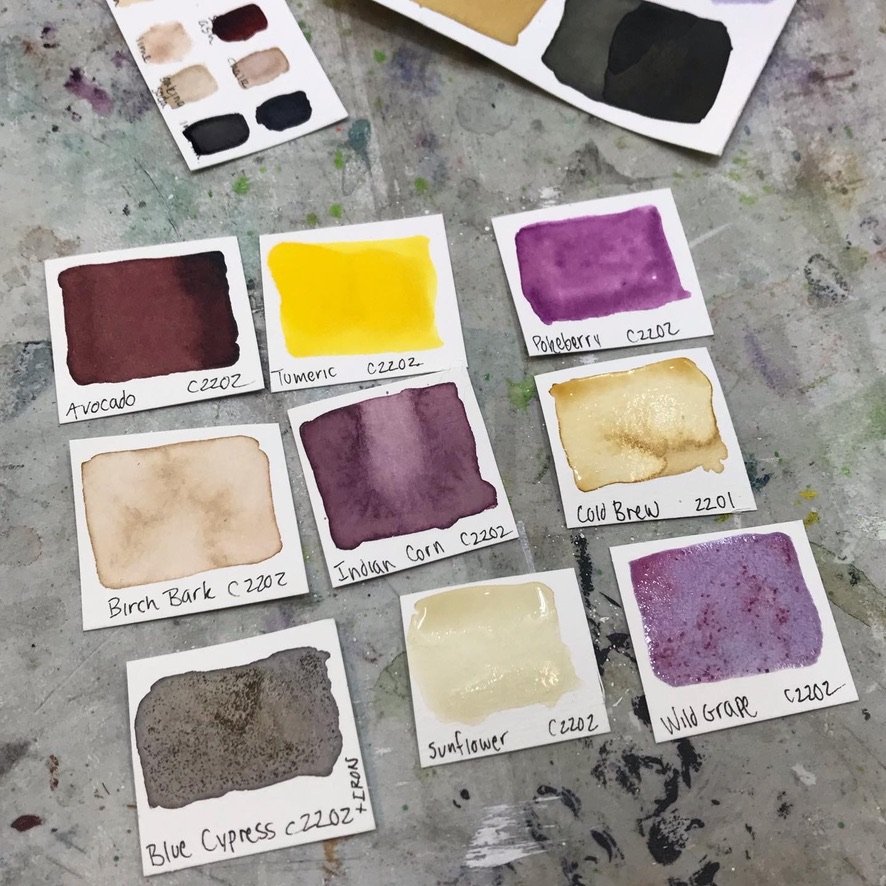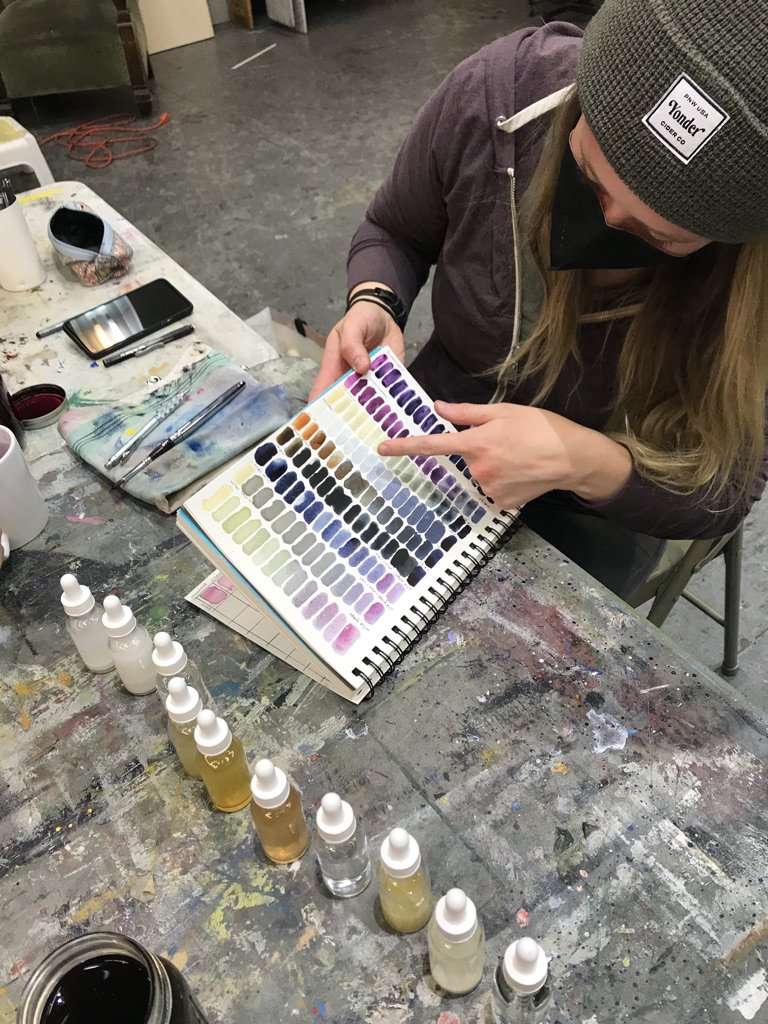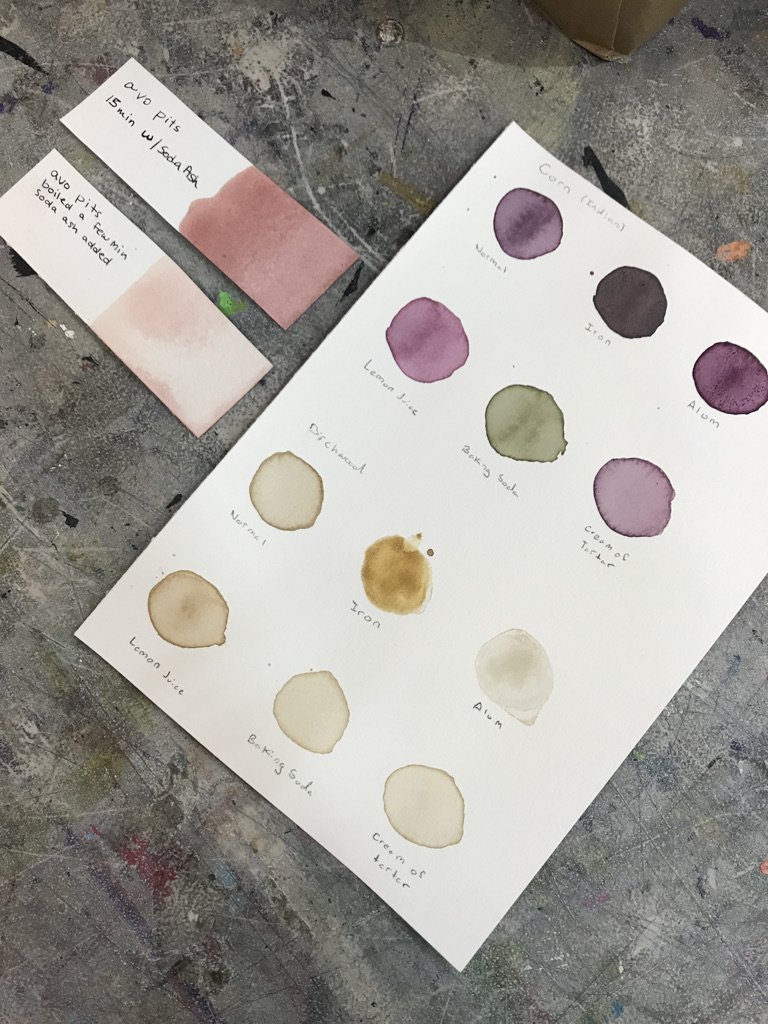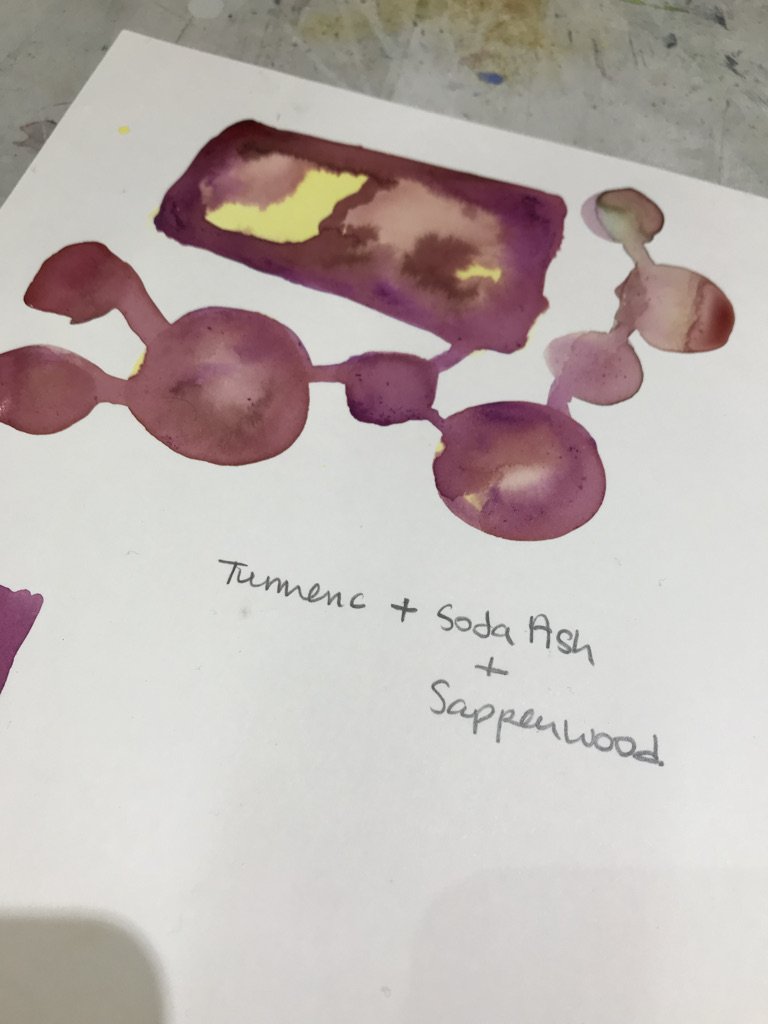Natural Ink: Let’s Create and Use
Ink is all around us. If you think about the last week, what products have you used that were printed with ink? What ink vessels have you used? For me I have used: a ballpoint pen, a micron pen, an ink with dip pen, a stamp pad, an inkjet printer, and a Sharpie. And I have used so many products that were printed with ink: food packaging, coloring sheet from a local restaurant, a newspaper, and the list could go on. There are so many different kinds at our fingertips!
If one looks up the definition of ink one might see on Wikipedia the following text. "Ink is a gel, sol, or solution that contains at least one colourant, such as a dye or pigment, and is used to color a surface to produce an image, text, or design. Ink is used for drawing or writing with a pen, brush, reed pen, or quill. Thicker inks, in paste form, are used extensively in letterpress and lithographic printing.” When I teach about making ink I like to use a simplified definition. Ink is a liquid to make free flowing lines and dries on paper. It is intensely pigmented and can used by different writing and drawing utensils.
I had the opportunity to teach a teen workshop and an adult course these last few months.
Teen Two Day Workshop
The first day was about communally making inks. I specifically decided upon source materials that could be easily found around the house or neighborhood: alder cones, blackberries, blackberry vines, onion skins, and brick. The second day was centered around drawing or painting with the ink. The biggest joy that I received after this workshop was getting an email from a parent saying that their child was already foraging for more materials to make ink.
Adult Nine Week Course
Each week had a new theme to give students a holistic view that there are so many different avenues in source materials, recipes to follow, and drawing possibilities. Here were a few of my favorite weeks!
Creating Inks From Compost
I love to compost! One thing that I regularly do is take items meant for the compost bin and turn them into ink. One can use nuts (skins, shells), drinks (spent tea leaves or coffee), flowers (old bouquets, flowers in garden about to go to seed, garden waste) and vegetables/fruits (skins, pits, roots, liquid from cooking, rotten pieces) to create a wide range of color. Two of the weeks focused on how to turn compost into some unique inks.
Pen and Brush
During the course students got to make 9 different inks. All of them held different properties but gave students a range of color to draw or paint with.
Play with pH
It is very interesting to observe what students key in on. For this course (and these particular students) there was joy in exploring how to shift the color with pH. In general if something acidic is added to the ink the color will: lift, brighten or warm. If an alkaline solution is added to the ink the color will: mute, sadden or there will be an unexpected change.

